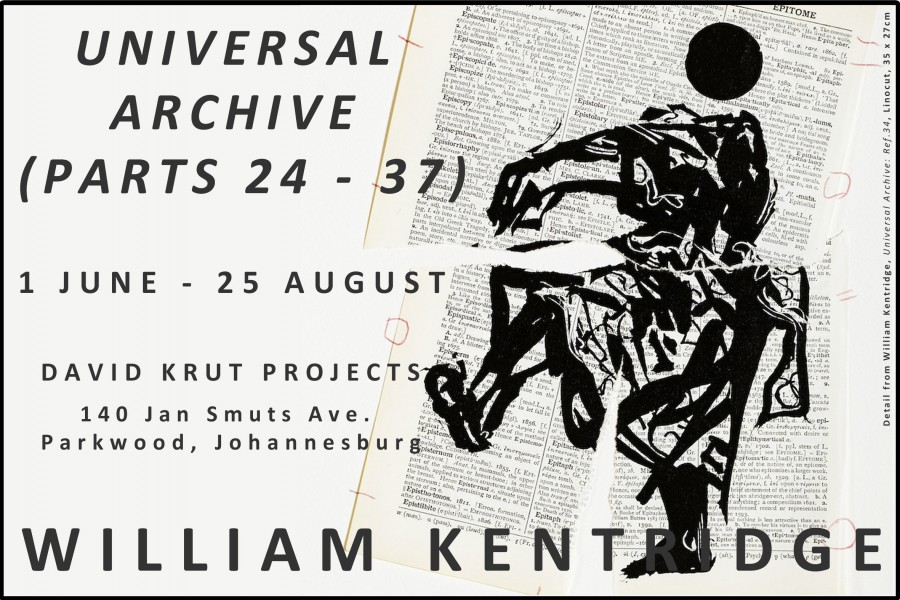The Universal Archive linocuts began as a series of small ink drawings by William Kentridge on pages of old dictionaries, made using both old and new paintbrushes. The images are made up of both solid and very fine lines, with an unconstrained virtuosity of mark-making. The ink drawings were initially attached to linoleum plates and painstakingly carved by the DKW printmakers and the artist’s studio assistants. As the project expanded, the images were photo-transferred to linoleum plates in order to preserve the original drawings. The images have been printed onto pages from various books, including early copies of the Shorter Oxford English Dictionary and Encyclopaedia Britannica.
As a result of the meticulous mechanical translation of a gestural mark, the linocuts push the boundaries of the characteristics traditionally achieved by the medium. The identical replication of the artist’s free brush mark in the medium of linocut makes for unexpected nuance in mark, in contrast with the heavier mark usually associated with this printing method. Furthermore, the paper of the nonarchival old book pages resists the ink, which creates an appealing glossy glow on the surface of the paper.
Many of the images are recurring themes in Kentridge’s art and stage productions: cats, trees, coffee pots, nude figures. While some images are obvious, others dissolve into abstracted forms suggestive of Japanese Sumi-e painting. The parallel and displaced relationships that emerge between the image and the text on the pages relate to Kentridge’s inherent mistrust of certainty in creative processes. This becomes part of a project of unraveling master texts, here questioning ideas of knowledge production and the construction of meaning. Aside from the numerous individual images created, there are prints assembled from pieces: cats torn from four sheets, a large tree created from 15 sheets. Groups of prints featuring combinations of individual images – twelve coffee pots, six birds and nine trees – show the artist’s progressive deconstruction of figurative images into abstract collections of lines, which nonetheless remain suggestive of the original form. This movement from figuration to abstraction and back, along with the works’ close relationship to Kentridge’s stage productions, suggests that this body of work holds an intriguing place in Kentridge’s oeuvre on the edge of animation and printmaking.
Kentridge has, to date, created almost 50 individual images and continues to expand the project with a series of drawings of old typewriters, amongst others. Some of these images will be printed on two sheets, using dictionaries and encyclopaedias from the mid 1950s.
There will be no formal opening for this exhibition.
The images below are an archive of the exhibition, for available work please click here, or contact the gallery on either (011) 447 0627 or [email protected]


